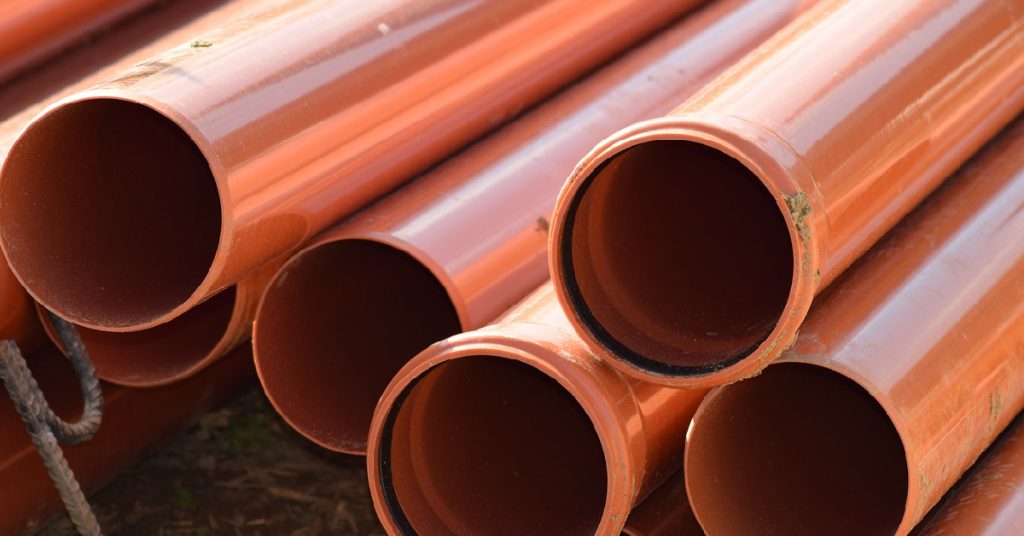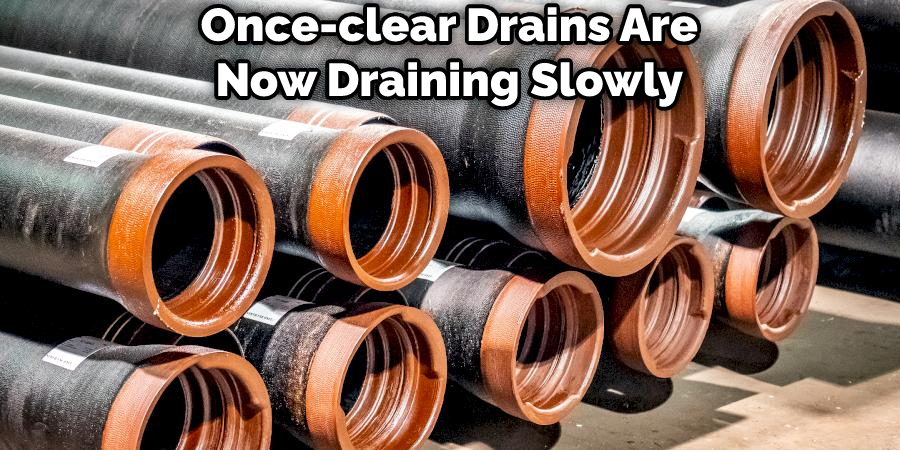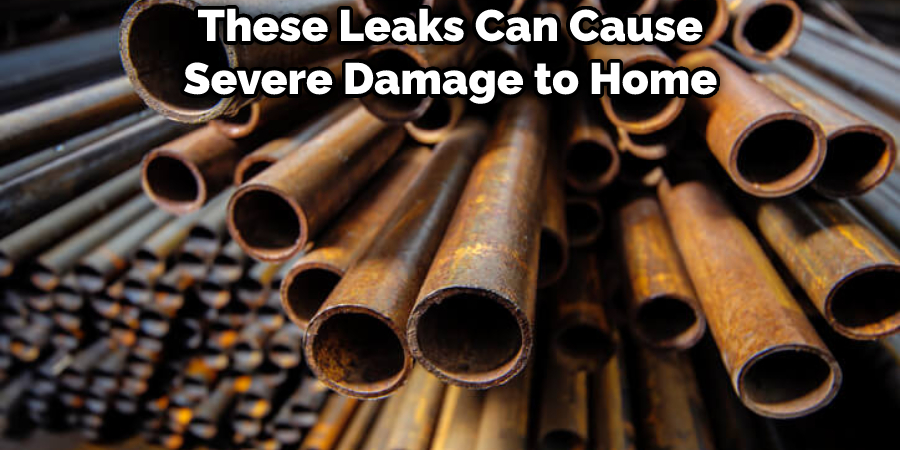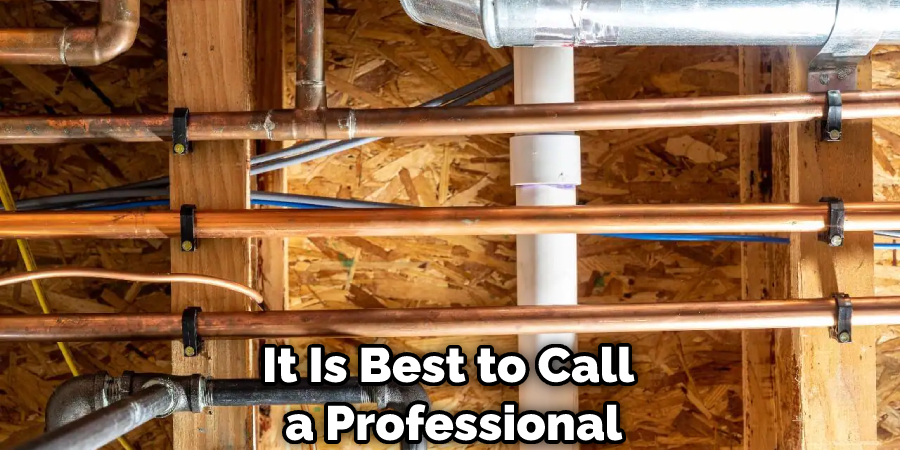Cast iron sewer pipe has been a popular choice for homes and businesses for many years because it is durable and sturdy. However, even the best materials can eventually wear down and need to be repaired. In this article, we’ll discuss how to repair cast iron sewer pipe. If you are dealing with a cast iron sewer pipe that needs repair, here are some tips to help you get the job done right. Keep reading to learn more.

The pipe that carries sewage away from homes and businesses can be made of a durable material called cast iron. But over time, it can develop cracks or breaks. If this happens, it’s important to repair the pipe right away to avoid further damage and possible flooding.
Summary: If you have a broken sewer pipe, there are several things you can do to fix it. You can try to use a plunger to clear the blockage, or call a professional. If you’re able to clear the blockage using these methods, you can try to fix the pipe by using a metal snake.
Do You Have Cast Iron Drain Pipes?
If your home has cast iron drain pipes, it is important to have them checked by a professional. Cast iron pipes can be very durable, but they can also corrode over time and eventually fail. A trained plumber will be able to tell you if your pipes need to be repaired or replaced.
If you have cast iron drain pipes, it’s essential to be aware of the potential for problems and regularly have them inspected. By taking these steps, you can help ensure that your drainage system continues to function correctly for years. In most cases, cast iron drain pipes can be repaired with a simple relining process. However, if the damage is severe, you may need to have the pipes replaced.
Signs of Rusting and Leaking Cast Iron Sewer Pipes
If you think your cast iron sewer pipe may be rusting or leaking, there are a few signs to look out for:
Slow Drains:
If your once-clear drains are now draining slowly, it could be a sign of a blockage caused by a leaky pipe.

Mold or Mildew:
If you see mold or mildew around your pipes, it could be due to moisture seeping through from a leak.
Cracks in the Foundation:
If you see cracks in your foundation, a leaking sewer pipe may be causing them.
Water Stains on Walls or Ceilings:
One of the telltale signs that you have a sewer pipe leak is water stains on your walls or ceilings. If you notice any water stains, it’s essential to investigate further to see if there is a cast iron sewer pipe leak behind them. There are other signs that can indicate you have a cast iron sewer pipe leak.
One is if your toilet or sink backs up, or if there is an odd odor coming from your drains. If you notice any of these signs, it’s essential to call us at MMJ Plumbing so we can find the source of the leak and make the necessary repairs.
Sewage Odors Coming From Drains or Toilets:
If you notice a sewage smell coming from your drains or toilets, it’s a clear sign that there is a problem with your sewer pipe.
Gurgling Sounds Coming From Drains:
If you hear gurgling sounds coming from your drains, it’s another sign that there is a blockage in your sewer pipe.
If your sewer pipe is made of cast iron and it’s starting to rust or leak, you need to fix it right away. Cast iron pipes are usually strong and durable, but they can start to deteriorate over time. Rust can make holes and cracks in the pipe, which can cause water to leak out. If you don’t repair the leaks, they can cause major problems for your house.

A Step by Step Guide on How to Repair Cast Iron Sewer Pipe
Step 1: Gather Necessary Tools and Materials
Before beginning the repair process, gather the required tools and materials to ensure a smooth workflow. Some essential items include a pipe cutter or reciprocating saw, a cast iron pipe repair clamp, neoprene or rubber gaskets, a wrench, work gloves, safety glasses, a bucket, a shovel, and a pipe cleaning brush.
Step 2: Locate the Damaged Pipe Section
Identify the damaged section of the cast iron sewer pipe that needs repair. Take note of any visible cracks, leaks, or corrosion that may require attention during the repair process.
Step 3: Turn Off the Water Supply
Before beginning any repair work, turn off the water supply to the affected sewer pipe. This will prevent water from flowing through the pipe while you work, reducing the risk of injury or further damage to the pipe.
Step 4: Excavate the Pipe (If Buried)
If the damaged cast iron sewer pipe is buried underground, use a shovel to carefully excavate the area around the pipe. Ensure you dig a wide enough trench to allow for easy access to the pipe and provide sufficient working space.
Step 5: Clean the Pipe
Using a pipe cleaning brush, thoroughly clean the exterior of the cast iron pipe, focusing on the area surrounding the damaged section. This will help ensure a secure and watertight repair.
Step 6: Cut the Damaged Pipe Section (If Necessary)
If the damaged section of the pipe is too extensive for a simple repair, it may be necessary to cut out the damaged portion and replace it with a new pipe. Use a pipe cutter or reciprocating saw to carefully cut through the cast iron pipe on either side of the damaged area. Be sure to wear work gloves and safety glasses for protection.
Step 7: Remove the Damaged Pipe Section
Once the damaged section of the pipe has been cut, carefully remove it from the sewer line. Place the removed pipe section in a bucket or on a clean cloth to prevent contamination of the work area.
Step 8: Measure and Cut the Replacement Pipe
Measure the length of the removed pipe section and cut a new cast iron pipe to the same length. Be sure to account for any additional length required for connecting the replacement pipe to the existing sewer line.
Step 9: Install Gaskets on the Pipe Ends
Slide neoprene or rubber gaskets onto the ends of the existing sewer pipe and the replacement pipe. These gaskets will create a watertight seal between the pipes when the repair clamp is installed.
Step 10: Position the Repair Clamp
Place the cast iron pipe repair clamp over the joint where the replacement pipe will connect to the existing sewer line. Ensure the clamp is properly aligned and centered over the joint.
Step 11: Tighten the Repair Clamp
Using a wrench, tighten the nuts on the repair clamp until the clamp is securely fastened and a watertight seal is formed between the pipes. Be cautious not to overtighten the nuts, as this may cause damage to the pipe or gaskets.
Step 12: Test the Repair
Turn the water supply back on and inspect the repaired area for any leaks or issues. If necessary, make adjustments to the repair clamp or gaskets until a watertight seal is achieved.
Step 13: Backfill the Trench (If Applicable)
If the cast iron sewer pipe was buried underground, carefully backfill the trench with soil, ensuring the pipe is adequately supported and protected. Tamp down the soil to prevent any air pockets or settling.
Step 14: Perform Regular Maintenance and Inspections
To prevent future issues with your cast iron sewer pipe, perform regular maintenance checks and inspections. Look for signs of wear, damage, or corrosion, and address any issues promptly to prevent further damage and extend the life of your sewer pipe. By keeping an eye on the condition of your pipes, you can take action before small issues become significant problems.
Step 15: Use Proper Drain Care
Practicing proper drain care can help prevent clogs and damage to your cast iron sewer pipes. Avoid disposing of grease, fats, or oils down your drains, as they can solidify and cause blockages. Use drain strainers to catch food particles, hair, and other debris, and regularly clean your drains with a natural, non-corrosive drain cleaner.
Step 16: Schedule Regular Professional Inspections
To ensure the continued health and functionality of your cast iron sewer pipe system, schedule regular professional inspections by a licensed plumber. A professional can identify potential issues, provide recommendations for maintenance, and perform necessary repairs to keep your sewer system running smoothly.
Step 17: Consider Pipe Relining
If your cast iron sewer pipe is experiencing frequent issues or is nearing the end of its lifespan, consider pipe relining as a long-term solution. Pipe relining involves inserting a new, durable lining into the existing pipe, essentially creating a new pipe within the old one. This can extend the life of your sewer system and prevent future leaks, cracks, or other issues.
Step 18: Be Aware of Tree Roots
Tree roots can infiltrate and damage cast iron sewer pipes, causing cracks, blockages, and other issues. Be mindful of the location of your sewer pipes in relation to nearby trees and consider removing or relocating any trees that pose a threat to your sewer system.
Step 19: Monitor Ground Movement
Ground movement or settling can cause stress on cast iron sewer pipes, leading to cracks or misalignments. Regularly inspect the area around your sewer pipes for signs of ground movement or settling and address any issues as necessary to prevent damage to your pipes.
Tips and Tricks:
- If you have to make more than one cut, use a miter box and saw. This will ensure that your cuts are clean and precise.
- When measuring for your repair, always measure twice and cut once.
- If you need to remove old sealant or putty from the pipe, use a putty knife or another sharp object. Be careful not to damage the pipe while doing so.
- Once you have made your repairs, it is essential to seal the area around the repair correctly. This will prevent water from seeping in and causing further damage. Use a high-quality sealant designed for use with cast iron pipes.
- If you are not confident in your ability to repair, it is best to call a professional. They will have the tools and expertise necessary to get the job done right.

The Benefits of Using Cast Iron Sewer Pipe
Cast iron sewer pipe is one of the most durable materials that you can use for your home’s sewer system. This type of pipe is known for its strength and longevity, so it’s a popular choice among homeowners. However, while cast iron sewer pipe is solid and long-lasting, it’s not immune to damage. If your cast iron sewer pipe becomes damaged, it’s essential to know how to repair it to avoid any further damage to your home’s sewer system.
There are several benefits to using cast iron sewer pipe, including:
- Longevity: Cast iron pipes can last for over 100 years with proper maintenance.
- Strength: Cast iron pipes are incredibly strong, so they’re often used in commercial applications.
- Durable: Cast iron pipes are resistant to corrosion and wear, making them ideal for sewer systems.
Prevent Cast Iron Sewer Pipe From Breaking in the First Place
You can prevent your cast iron sewer pipe from breaking in the first place by taking some simple precautions. First, make sure that you regularly inspect your pipes for any cracks or damage. If you see any damage, have a professional repair it as soon as possible.
Second, avoid using harsh chemicals to clean your pipes. These chemicals can eat away at the pipe, causing it to break down over time. Instead, stick to gentle cleaning solutions and be careful not to scrub too hard.
Third, ensure that you don’t put anything down your drains that could damage the pipes. This includes things like grease, oil, and food scraps. Avoid pouring these materials down the drain, and dispose of them properly instead.
If you take these precautions, you’ll be much less likely to deal with a broken cast iron sewer pipe. But if your pipe does break, don’t panic. There are a few different ways that you can repair it, and we’ll go over those now.
Frequently Asked Questions
Can You Patch a Cast Iron Drain Pipe?
Cast iron drain pipes are often considered the gold standard when it comes to plumbing. They’re durable, long-lasting, and can handle a lot of stress — perfect for situations where you need an extended warranty on your new pipe. However, cast iron drain pipes do have one downside: they can be difficult to patch if something goes wrong.
There are several methods that you may use in order to patch a cast iron drain pipe: using caulk or silicone sealant, using metal screws or bolts with washers and nuts, or using a trench digger with chisels and shovels.
Will Flex Seal Work on Cast Iron Pipe?
In general, Flex Seal should work well on most types of surfaces if applied properly. Follow the instructions that come with your package to ensure proper application. Additionally, check the manufacturer’s website for additional FAQs or customer reviews about using Flex Seal on cast iron pipes.
What is the Life Expectancy of Cast Iron Drain Pipe?
I’m sorry to hear that you’re having drainage problems. A cast iron drain pipe may last anywhere from 50 to 100 years before it needs to be replaced. If you do need to replace it, make sure to get a quality cast iron drain pipe that will meet the requirements of your specific project.
What Can I Use to Stop a Leaking Pipe?
One common solution is cold water and ice. Putting 1/2 gallon of cold water in a bucket and adding enough ice to cover the container will help turn the liquid into solid blocks, which will then push against the pipe stem preventing it from flowing any further. You can repeat this process as necessary until the leak is fixed or until your freeze stash runs out.
Another popular method involves using caulk or sealant around the circumference of the hole where the pipe has started spilling. This will not only keep moisture from entering but also make repairs difficult if done incorrectly by voiding warranty protections on some types of materials (like steel pipes).
If none of these solutions work, call an experienced professional like Masters Rooter, who can get your home back up and running quickly without causing additional damage.
Conclusion:
If your cast iron sewer pipe is leaking, you’ll need to take action quickly to repair the damage and prevent any further issues. Depending on the severity of the leak, you may be able to patch it up with some quick-drying epoxy. However, if the leak is more extensive, you’ll need to replace the entire section of pipe.
Either way, it’s important to call in a professional plumber to assess the damage and ensure that the repairs are done properly. With their help, you can rest assured that your cast iron sewer pipe will be as good as new in no time! We hope you find this article on how to repair cast iron sewer pipe helpful.
